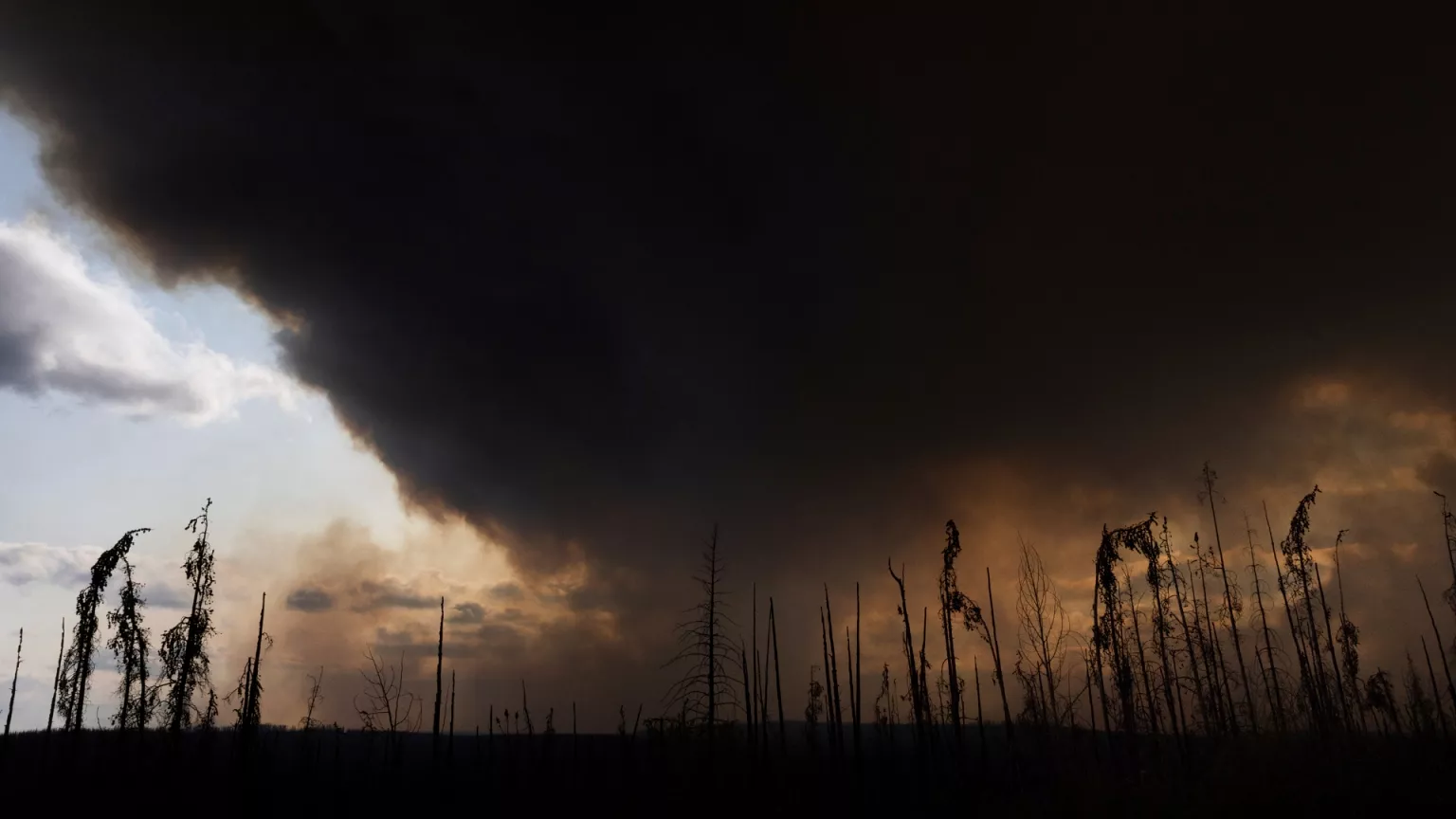Canada is experiencing a devastating wildfire season in 2025, with over 200 active wildfires, more than half of which are deemed “out of control” by fire officials. The situation is especially dire in Manitoba, Saskatchewan, and Alberta, where intense heat, dry weather, and strong winds have combined to create the perfect storm.
📍 As of early June, over 17,000 people have been evacuated in Manitoba alone, while other provinces have declared states of emergency (FT).
🧨 What’s Fueling These Fires? “Zombie Fires” and Climate Change
A significant portion of these blazes are being driven by “zombie fires”—underground peat fires that reignite after smoldering through winter. British Columbia has reported 49 such incidents, particularly around Fort Nelson. Scientists link the growing wildfire intensity to climate change, with rising global temperatures drying out forests and extending fire seasons.
🌫️ Canadian Smoke Triggers Global Air Quality Alerts
The thick smoke from Canadian wildfires has crossed borders, severely affecting air quality in the United States. Cities like Chicago and Detroit have registered AQI levels exceeding 150, categorized as “unhealthy.” Even areas as far away as Europe have reported minor atmospheric effects from Canadian wildfire smoke.
🚨 States including New York, Iowa, and Maine have issued air quality warnings urging residents to limit outdoor exposure.
(Washington Post, The Economic Times)
⚠️ Health Risks from Wildfire Smoke
Wildfire smoke contains fine particulate matter (PM2.5) that can aggravate respiratory issues and cause serious health concerns, particularly for:
- Children
- Seniors
- Pregnant individuals
- People with asthma or heart conditions
Health agencies recommend:
- Staying indoors
- Running air purifiers
- Wearing N95 masks outdoors
- Tracking the Air Quality Index (AQI) via platforms like AirNow or NOAA
🧳 Evacuations, Closures, and Travel Disruptions
Thousands have fled their homes as evacuation orders stretch across towns in Manitoba and Saskatchewan. Provincial parks such as Narrow Hills and parts of Whiteshell have been closed. Travelers are urged to monitor Canadian Fire Reports for updates.
🌍 Environmental and Global Implications
These wildfires are contributing significantly to global carbon emissions, as burning peat and forest release millions of tons of CO₂. Furthermore, the smoke affects weather systems, cloud formation, and even international flight safety.
🔐 How to Stay Safe During the Wildfire Crisis
Here are quick tips to reduce health risks and stay safe:
- Stay informed through official government fire portals
- Use HEPA air purifiers to reduce indoor smoke exposure
- Avoid strenuous outdoor activity during high AQI periods
- Prepare an evacuation kit if you live in an at-risk area
🗞️ Final Thoughts
The 2025 Canada wildfires are more than a national crisis—they are a global environmental emergency. From evacuations and health risks to cross-border air pollution, the impact of these uncontrolled fires is wide-ranging and growing. As climate volatility continues, experts warn this could become the new normal without global efforts to reduce emissions and invest in wildfire management.
Related Resources:
- 🔗 Canadian Wildland Fire Information System
- 🔗 U.S. AirNow AQI Monitoring
- 🔗 Travel Advisory for Canadian Wildfires

